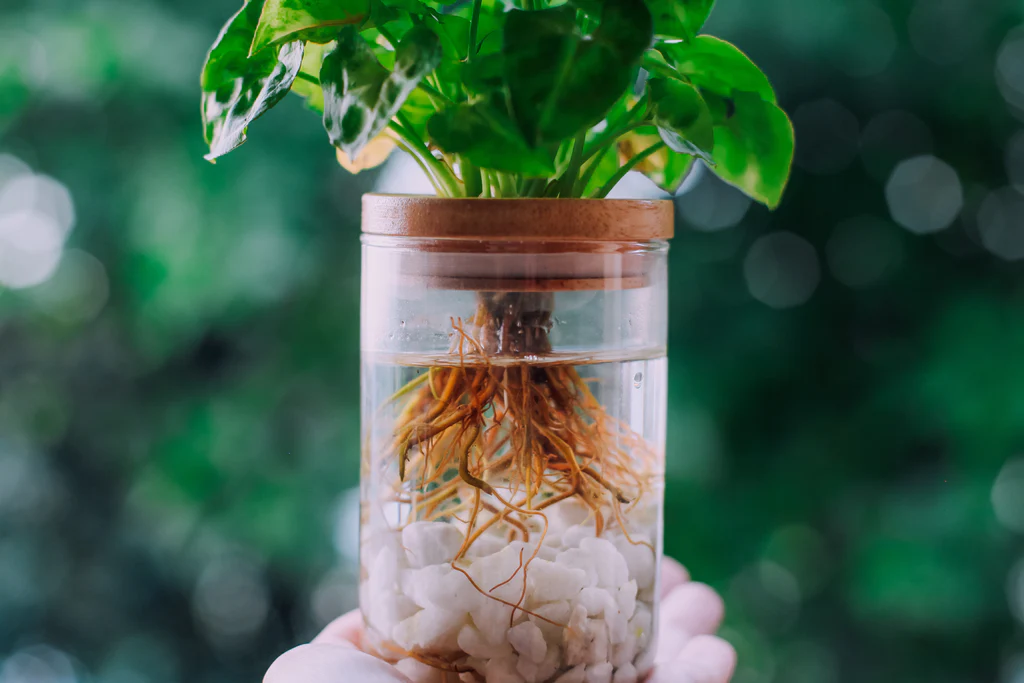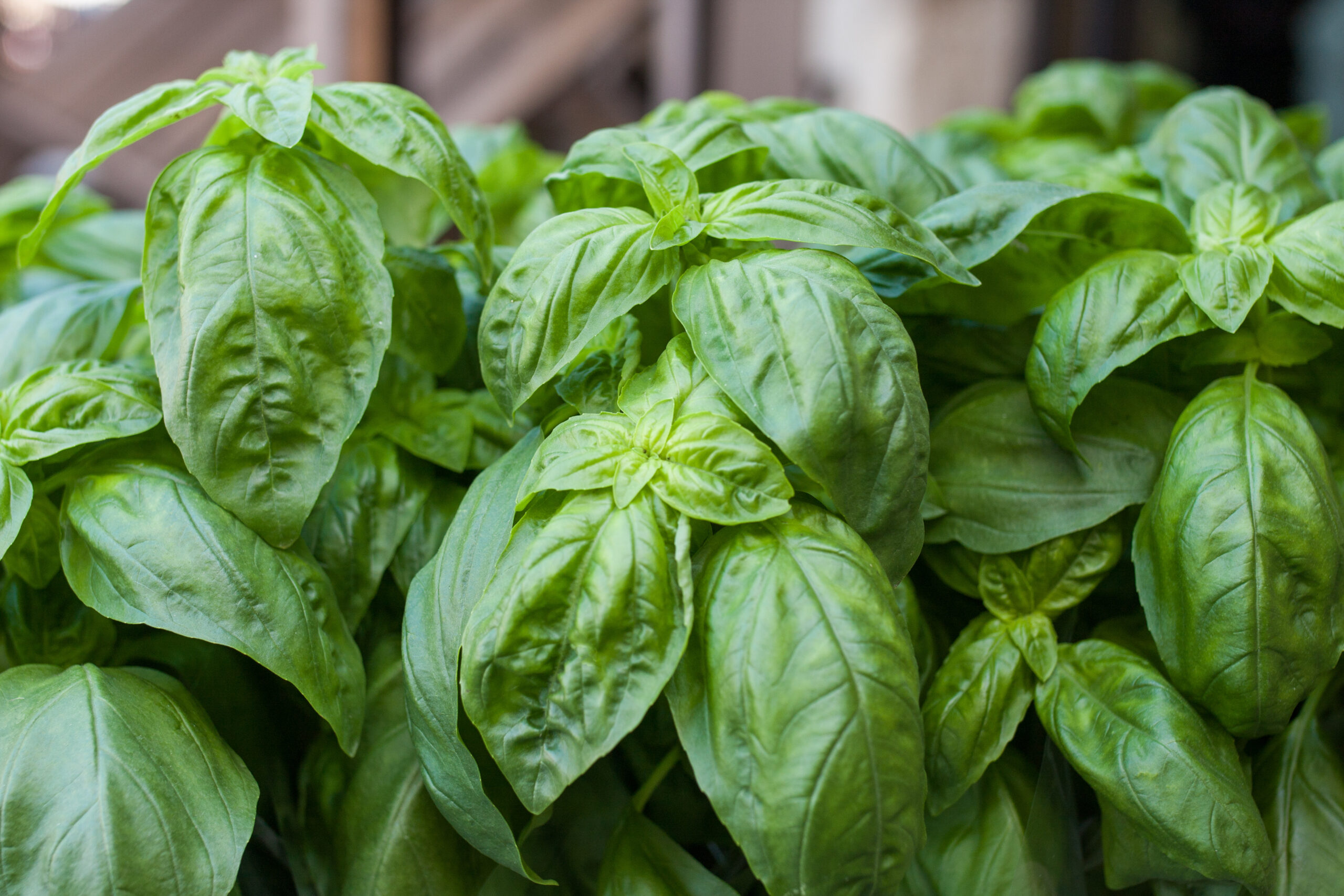There has been a pattern of special attention towards techniques that give sustainability to the ecosystem. Hydroponic herb gardening is one of them.
The reason why one must look for solutions like these is because the resources are limited. So, with the population increase, different resources are being overused and hence are depleting day by day. Especially in agriculture, the fertility of the land is increased by using fertilizers and other such compounds. This increases fertility, agricultural pollution is increased and the ecosystem is hammered in the overall process.
Whereas, hydroponic herb gardening is an environmentally friendly process in which resources are used and recycled, so you get to build a more sustainable process for your agriculture.
Summary
Sustainability is a key thing in this modern world. Exercising this on a smaller scale at home hydroponic herb gardening can help a great deal. It is environmentally friendly as fewer resources are utilized, and they are also recycled, overall conserving the ecosystem.
Hydroponic Herb Gardening Overview and How it Works
In case you are unaware of what hydroponic herb gardening is, it is, in a simple sense, the use of water instead of soil to grow herbs indoors or in-house.
If we look at the traditional ways of gardening, the soil is used. The plants need nutrients, and the soil provides them with those nutrients. This helps them grow.
In hydroponic herb gardening, the water solution is used, but it is enriched with the desired nutrients that a plant needs. So, what will happen is that the plant will get its desired nutrients. And it will grow even in the absence of the soil.
The plant is in the plastic pot. The water is transferred to the plant with the help of a flow system. The water flows in a flood table and that table is underneath the plastic pot.
The water is transferred or flooded according to the plant’s needs. Generally, a timer is set, and the water flows accordingly. And after some cycles the water is removed. So plants get the oxygens from the roots.
Key Notes
- Water instead of soil is used to grow herbs indoors.
- The water solution is used which is enriched with nutrients.

DIY approach for Your Hydroponic Herb Garden
So after we have examined what a hydroponic herb garden is, so lets find out how we can make our own hydroponic herb garden. We have gathered a step by step process to assist you with each point.
Collect the Required Essential
The first step when you are going to make a DIY hydroponic herb garden is to collect the essentials. While you are in the process, you will need basic equipment like growing mediums, containers, herb seeds, starter plants, and nutrient solutions. Before starting out, you must have arranged all these essentials first.
Select Your Herbs
When you are doing this DIY project, it is essential to first look at which herbs you want to grow. It is a nice approach to go for herbs that are easy to grow. As you are doing it yourself, you don’t want to make the process complex, and you have to give extensive care in order to protect the herbs.
Easy to grow herbs like basil, thyme parsley. These can be grown easily as they dont need that much intensive care.
Choose Your Hydroponic System
There are basically two hydroponic systems that are best suited for herb gardens. They are namely the Deep Water Culture (DWC) and the Kratky method.
Deep Water Culture
In the deep water culture system, the nutrient-rich water solution is used for the herbs, and the roots are placed in that solution. In order to make it on your own you will do the following steps.
- Firstly, select the container. Try to select a bucket that is around 3 and a half to 5 gallons.
- The next step is to ensure that the roots are freely hung into the water nutrient solution. This can be done by using 10-inch net pots.
- Then, to provide oxygen to the plant, you will have to set up an oxygen pump. This is connected to an airstone in the reservoir.
- Then comes the step of plant placement. In plant placement you will insert the plant with its roots in the net pots. This will ensure that the roots are going in the water solution and are held submerged in it.
Advantages and Disadvantages
Starting with the advantages we have
- With a deep water culture system, plant growth is increased. The reason why it grows is because of the nutrient intake and the oxygenation process involved in the deep water culture.
- There is no such fertilizer needed because of the nutrient solution used which has everything the plant needs.
- Simple design which is easy to make and maintain.
The disadvantages we have
- Water temperature fluctuation in non-recirculating systems is an issue.
- Individual testing is required to find out the desired nutrient supply in multiple bucket systems.
Kratky Method
The other system is the Kratky Method. The Kratky is a non-circulating system. So, there is no such need for pumps to circulate water or nutrients. The nutrients are available for the whole lifespan in the Kratky method. The additional oxygen is obtained after some time as the water level decreases.
The following steps are done to DIY make a Kratky Method.
- The first step is the same as DWC. In the container selection, you can opt for a mason jar or a bucket to hold water and the nutrient solution.
- The nutrient solution is added to the water. It is advisable to look for the instructions to do it appropriately.
- Next is the plant placement. The plants are inserted in the water solution.it is ensured that the roots are inside the water nutrient solution so they get the desired nutrients.

Advantages and Disadvantages
In advantages we have
- The system is quite simple and affordable. You don’t need any pump, so no electricity is required.
- You don’t need to monitor it carefully as it does not require attention every time.
- The system is quite adaptable as well. You can set it up anywhere. Setting the size is also easy.
In disadvantages we have concerns like
- The system is not for every herb. The herbs which require more nutrients are not easy to grow in this system.
- Due to no circulation, what happens is that the chances of the bacteria, algae, and other microbes’ growth are increased. Hence, it requires cleaning to maintain it.
- Temperature control is an issue as it is in the DWC.
Maintenance
Monitoring is required for the maintenance irrespective of the system you have installed.
You need to minor your water levels. The pH must be between 5.5-6.5. Other parameters like light must be given to the herbs for 14-16 hours daily. Temperature and humidity must be maintained according to the individual requirements of the herb.
Harvest
So, after all the process management and the growth of the herbs, now is harvest time. Harvest your herbs and enjoy your hydroponic herb garden products.
Why Hydroponic Herb Gardening
There are a variety of reasons why one should opt for hydroponic herb gardening. Here, we have compiled a bunch of a few.
Increase Variety Compatibility.
One of the reasons why a hydroponic herb garden must be considered is its capability to grow a wide variety of herbs. There are various herbs that require different kinds of soils. Some require different kinds of treatments, etc. So, in all that, it becomes really difficult to tailor the environment such that it is able to grow all of the herbs.
Yet, with hydroponic herb gardening, you can do as such to develop a wide variety of spices like basil, parsley, sage, thyme, cilantro, etc, for the whole year.
Water Efficiency
The water is one of those resources that is required in almost all life activities. Therefore the conservation of water is very essential.
In traditional methods of gardening, a lot of the water resources are wasted. This loss of water is a bigger concern when we think of traditional gardening. In hydroponic herb gardens, this issue is resolved as in this process, the water is efficiently used and recycled. Water usage is reduced to a minimum. So, if you want to have a home herb garden and water scarcity, then opting for a hydroponic herb garden is the best option.
Space Optimization
Another benefit that we get is space optimization. Hydroponic gardening occupies significantly less room than traditional methods. You can, without much of a space, grow the spices or herbs inside your home by the hydroponic herb gardening.
More than that, there are other techniques like vertical gardening etc. These techniques help in more effective management of the space, and thus, you can grow a lot more herbs in that smaller, congested space.
Whole Year Growth
In the traditional method of gardening. You don’t get whole year growth as it depends more on the seasons. And there are certain limitations to the growth of the herbs. But with hydroponic herb gardening, you get access to fresh herbs for the whale year every year.
Environmentally Friendly
Hydroponic herb gardening is an environmentally friendly option. The hydroponic herb garden is a more sustainable gardening process than the other traditional ones.
And the reason is that in hydroponic gardening, the resources are well utilized. The water is efficiently used. There is a lesser carbon footprint, and overall the pollution is minimized if we use this approach.









